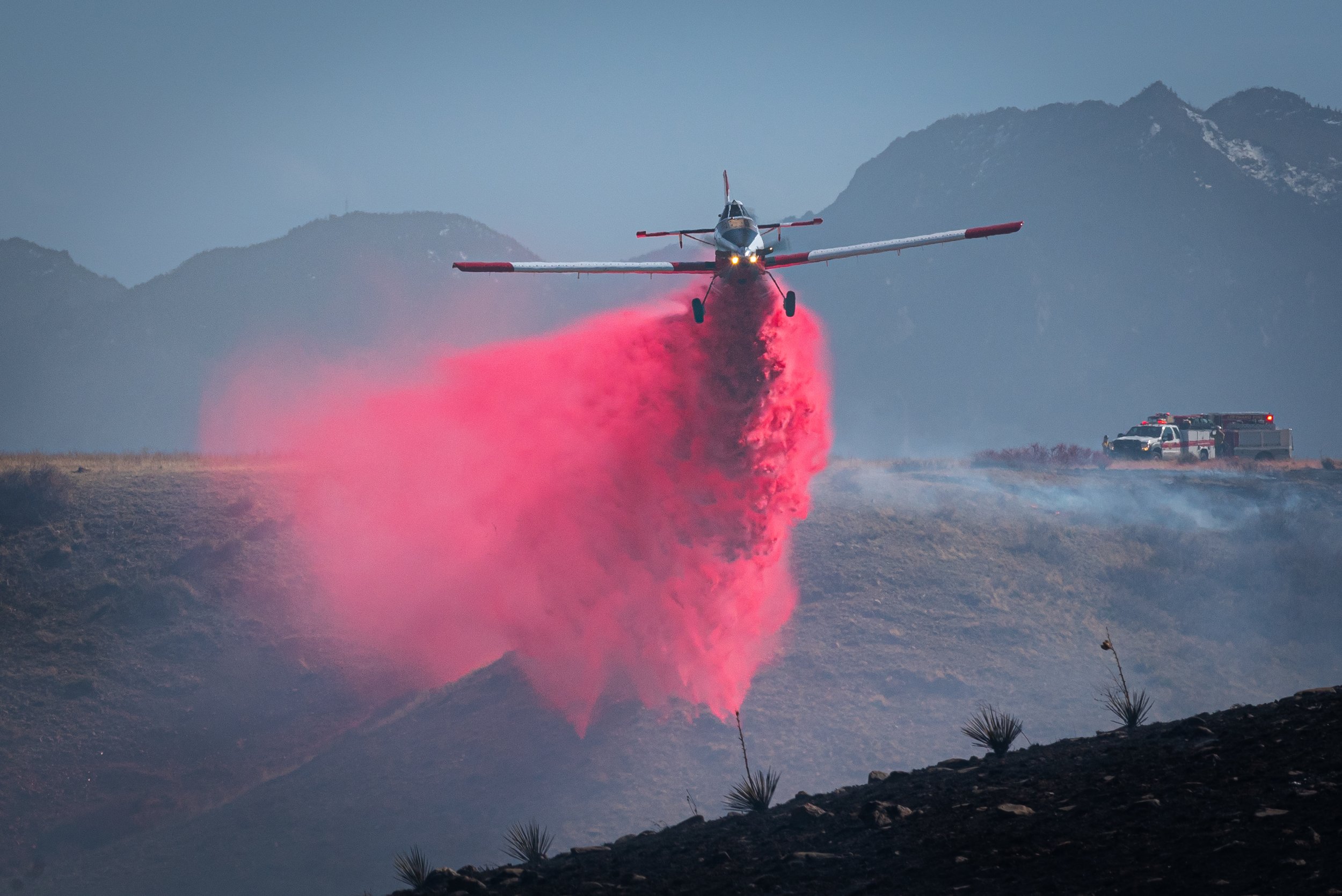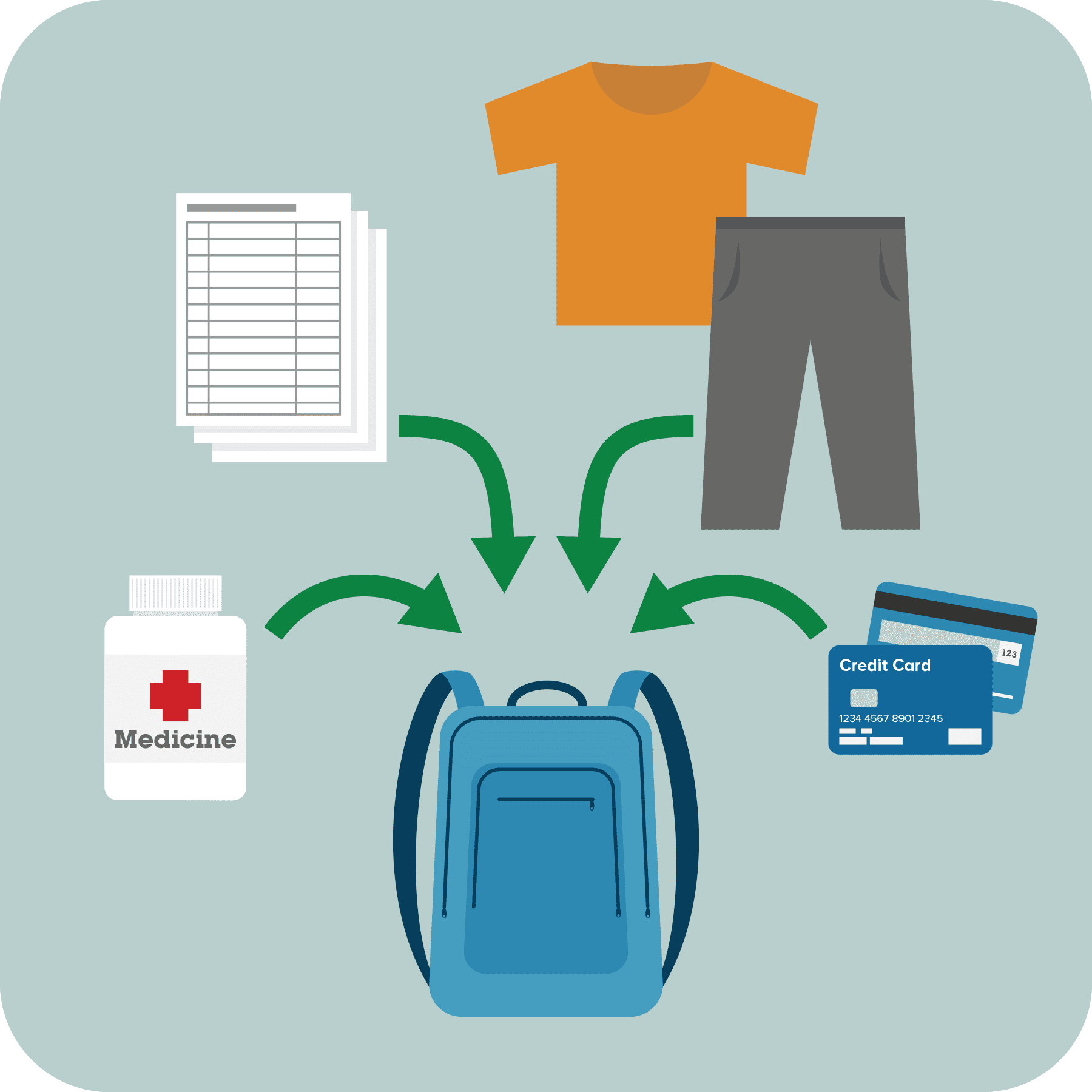
Wildand Fire
Mitigation and Preparation
Wildland fires are a natural process, however, in recent years, fires have grown in size and intensity causing devastation and damage. Learn how to prepare for and prevent wildland fires so that you can stay safe in the event of a fire.
Wildfire Myths
Myth: Wildfires only happen in the summer and fall
Fact: Wildfires can happen any time of the year, even in the winter. The Marshall Fire, one of the most devastating fires in Colorado History, began on December 30th, 2021, during the wintertime.
Myth: Wildfires only happen in rural areas
Fact: Wildfires can happen anywhere, even in suburbanized neighborhoods. It is recommended to mitigate your property for wildfires regardless of where you live.
Myth: Wildfires are completely preventable
Fact: While mitigation can help, there is no way to prevent every wildfire. Some wildfires are even difficult to control. With climate change and many other factors, wildfires have become more aggressive and may move with incredible speed, making them very difficult to extinguish.
While wildfire mitigation may feel minimal, it can make a huge difference when it comes to protecting your property. There are many ways to help prepare your property for a wildland fire, but here are a few key concepts to help you to prepare your home in the event of a fire.
Steps You Can Take
Move Fuel Sources Away From your Home
Remove any fuel sources from near your home. Move all grills and firepits at least 10 feet from your home. If you have firewood, store the firewood at least 30 feet from your home, uphill if possible. Never store firewood underneath your deck. Keep propane tanks at least 10 feet from your home, and clear vegetation around above ground propane tanks.
Clear Excess Vegetation
Clear excess vegetation around your home. Remove any dead plants in pots, hanging planters, and flower beds. Rake needles from around your home and remove mulch and juniper bushes within 5 feet of any exterior wall. Mow or trim grasses at least 5 feet around all sides of your home. Clean all needles and leaves from your gutters and roof.
Trim Your Trees
Trim all trees that are within 20 feet of your home. Remove any limbs that are within 10 feet of your home. If the tree catches fire, these limbs can spread the fire onto your home. Remove tree limbs that are close to the ground. In the event of a grass fire, these limbs can catch fire and engulf the entire tree.
Be Prepared
If wildfire evacuations are needed, you may only have minutes to prepare yourself and your home before you have to evacuate. Make sure that you and your family are ready in case of an emergency. If time permits, the following steps can help firefighters protect your home from the firefront.
Have A Plan
In the event of a wildfire or other natural disaster, make sure that you have an evacuation plan. Keep a bag, often referred to as a Go Bag, ready to take with you if you need to evacuate at a moment’s notice. These bags often contain important medications, important documents, credit cards, and a change of clothes. Know the different routes out of your neighborhood so that you can evacuate safely in any direction.
Completely Close All Windows And Doors
Remove All Padding From Patio Furniture
Move All Portable Propane Tanks At Least 10 Feet From The Home
Remove Any Outdoor Doormats
Remove Hanging Plants
Leave Hoses Connected To The Home, Ready For Use
Open Any Wood Gates Attached To The Home
Turn Off All Propane Tanks
Move Vehicles Away From The Home
Turn On Front Porch Lights
If Time Permits…
If time permits during an evacuation, there are a few things that you can do to help fire crews protect your home. These small steps can make a difference, so make sure that you know them before a disaster strikes. See this guide for more information on creating a defensible space.













